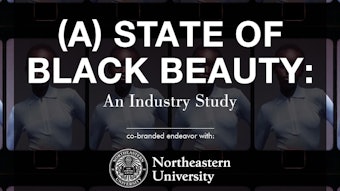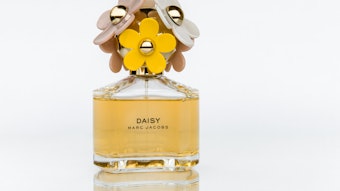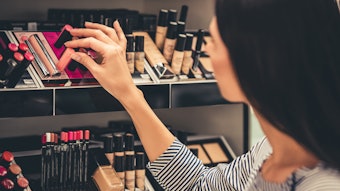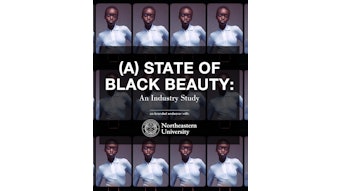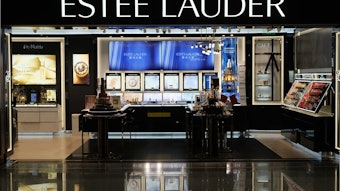- Organic beauty is fast becoming the hot growth segment in the industry.
- The supply chain for organic materials has improved dramatically, making the segment worth another look for those who have dismissed it in the past.
- There is an increasing consumer preference for certified organic products across nearly all beauty categories, but that also requires distinct work and investment on the part of beauty brands.
We’ve all heard—or maybe even raised—objections before about organics: “Organic products aren’t as good as the normal stuff,” “Organic products cost too much,” “Organic products aren’t really any better for you,” or “Organics are for ‘hippies.’” Some retail buyers might even say, “I tried organics in the past, and they just don’t sell.” To be honest, most of these comments, at one time or another, probably were valid. However, a closer look reveals it’s a new day in the world of organic beauty, and progressive brands and retail merchants are starting to innovate and differentiate their product offerings by featuring certified organic beauty products in their assortments.
Historically, it took great sacrifice in terms of cost, taste, aesthetics and convenience for people to go organic. As a result, the vast majority of Americans and even consumers around the world would not choose to integrate healthier organic, eco-conscious choices into their everyday lives. Thus, these more green-friendly behaviors often were associated with eco-conscious people who were passionately committed to the world around them, even if it caused them to make some less-than-desirable trade-offs. And quite often, these types of people were seen as “hippies.”
Looking to the food industry for insights, we can see consumer demands for lower fat, no MSG, no trans fat, gluten-free, individual serving sizes and countless other concerns served as the basis for food suppliers, manufacturers and brands to respond by providing consumers credible choices from which to choose—and these demands fueled rapid growth in the market. Key success factors in this were:
- The industry recognized these new trends were pent-up, unmet consumer demands.
- The supplier members of the industry established and communicated clear and understandable standards in regard to these demands.
- The industry members then met the demands with products and services that offered convenient, effective and affordable options.
In each of these examples, consumers demonstrated a willingness to meet in the middle by often paying a slight premium for the products in exchange for the enhanced benefits.
A Desire to Choose Right
More and more people are making organic demands. Actresses such as Christine Taylor, the brand ambassador for the Nourish certified organic beauty brand, are speaking about the benefits of organic beauty products, and organic products and brands are being touted in fashion magazines, on talk shows and beyond. It’s evident the organic trend is moving beyond the hippies and is on its way to becoming hip—and embraced by the mainstream. It now appears to be at the much sought-after tipping point where underserved and unmet consumer demand for organic beauty is aligning with new emerging industry innovations to achieve rapid growth and acceptance. And the change is part of a bigger picture.
The consumer call-to-action to be more eco-conscious has been one of the single biggest consumer behavioral changes in recent history, along with the equally prevalent consumer trend toward all things virtual and wireless. And although these two trends appear very different on the surface, they are both major changes that are related to the same underlying consumer dynamic and have both happened at a rapid pace.
Overwhelmingly, when given a clear choice, most people want to “choose right.” With accessible wireless technology to support them, that motivation to “do right” helps drive eco-conscious behaviors such as telecommuting/carpooling/walking to work, shopping online, Internet banking/paperless billing, and printing fewer hard copy documents. While one could argue these behaviors are driven by achieving cost savings or being efficient time-savers, they also reduce an individual’s carbon footprint. This combination of factors has enabled people to view being smart while also being green as something not only attainable, but also hip to do.
Moving from technology to organic beauty, the current key market factors there also are making conditions ripe for more consumers to embrace organics in the same manner as they’ve embraced technology and other related sustainability behaviors. Think about it—these activities would have had minimal adoption success just a decade ago, so what changed to make them so widely accepted?
“Just Give Me a K.I.S.S.”: A Case Study
Who knew a line from Aerosmith’s Walk This Way classic rock anthem would ever make it into an article about organic beauty, but Steven Tyler and the boys had it right (although I may be taking them a bit out of context). It’s about K.I.S.S.—Keeping It Simple, Silly. Convenient, affordable, effective, desirable and distinctive options—the five key factors—are critical prerequisites to affecting meaningful behavioral change. Simply put, if it isn’t a clear and easy choice for the consumer to make, then the adoption rate of any behavior change will be slow and the potential emerging trend likely will stall or even fail.
Nourish–“Organic Food for Healthy Skin,” launched in early 2012—followed the K.I.S.S. development concept in its debut. While leading the Nourish team, I spent a considerable amount of time speaking to and working with consumers, retailers and other industry experts in the organic beauty segment in order to develop a line that delivers on the K.I.S.S. principle, and, although certainly not perfect, it’s a case study worth noting as it can demonstrate the opportunity to address the five key factors in a simple and straightforward manner.
Convenient, affordable, effective, desirable and distinctive—five factors that can have a direct correlation to how quickly the emerging organic beauty trend becomes a bona fide phenomenon—or a bust.
Convenient. First and foremost, it needs to be available where consumers shop, both online and in stores. Organic beauty’s growth will be directly correlated to retail availability. Fortunately, retailers such as Whole Foods Market and Ulta have seen this potential and rolled out the Nourish line (in addition to many other organic beauty brands) to all their stores. Several other retailers also recently have expanded their organic beauty assortments to include authentic USDA-certified organic brands such as Aubrey Organics, Dr. Bronners, EO, Juice Beauty and Dr. Mercola.
It is notable that the leading retailer in this space, Whole Foods, is actively encouraging its vendor partners to address this market segment. Jeremiah McElwee, executive whole body coordinator for Whole Foods, commented about the Nourish line, saying “[It] represents a major step forward in the category and is consistent with our efforts to provide more body care options with increased organic content. Nourish is offering 100% USDA-certified organic beauty products that are affordable, effective and luxurious. We hope more brands follow this lead.”
Affordable. Unfortunately, many of the certified organic products on the market are too costly for the majority of consumers. In political terms, to drive a major trend, you need to be attractive to the 99%, not just the 1%. That is why price points that are under $10, or at least under $20, are going to be critical to driving organic beauty’s growth. The Nourish bath and body care line is strategically priced to be under $10, and this has been a critical driver in securing early adoption and trial for the brand.
Effective. Nourish partnered with a variety of actual organic food vendors to find certified organic materials such as shea butter, coconut oil, aloe vera juice, sweet almond oil and olive oil to use in the product formulas. These ingredients helped the products to deliver a statistically significant “nourishing” effect on the skin in designated clinical studies. Equally important and challenging, Nourish made sure all its formulas utilized USDA organic-acceptable preservative systems, and then tested them to confirm the products would be safe in the market. (For more information on organic beauty ingredients, see “The Lure of Organic Ingredients.”)
When brand ambassador Christine Taylor and I met with top women’s magazines and online beauty blogs, nearly everyone probed about whether or not the products actually work, and many requested samples so they could conduct their own in-house tests and studies. The key lesson here is that verifiable efficacy is critical to credibility for any long-term business proposition.
Desirable. This is an easy one to understand, but a critically important one to actually execute in-market, especially for organic beauty products. Why? It’s simple—past experiences with the category have been mixed. Consumers who tried organic beauty in the past likely encountered products that were expensive, had poor aesthetics and many times didn’t work as well as their conventional counterparts.
To overcome this view, it was—and is—critical to make organic products that are desirable—not just tolerable. Doug Bowman of fragrance house J.E. Sozio shared, “The availability of certified organic materials has continued to expand with the demand, and while it is far easier and less costly to create fragrances from non-certified organic materials, the authenticity of the scent experience can be a great differentiator. With Nourish, the Sozio perfumers were able to deliver on Rick’s vision of distinctive scents [which he challenged the team to deliver on] that were not readily available as organic choices in the market including Almond Vanilla, Lavender Mint and Fresh Fig.”
Distinctive. This last point comes down to a consumer awareness and communication issue. Again, if you look at the historical consumer feedback, you see there is significant confusion about what “organic” truly means. And that shouldn’t be surprising if you attended any of the industry events in just the last year (including the GCI-sponsored Natural Beauty Summit America in New York), where this very issue is an ongoing debate.
As well-meaning as each person is, everyone in the industry, including both individual brand marketers and retailers alike, needs to understand the constraints they will be placing on consumer acceptance if they continue to have trouble articulating what organic means. Uncertainty will enable other brands (many of which are on the market today and have been the subject of false claim lawsuits) to continue to greenwash their organic claims, further muddying the waters and frustrating potential customers who are looking for consistent guidelines to make good decisions.
Next time you’re at the supermarket or drugstore, watch how shoppers make purchase decisions. More than at any time in the past, many consumers are closely reading labels, shelf signs and checking the Internet to make better, more informed purchase decisions. This insight was reinforced in the August 2010 GCI article, “The Future of Beauty: Redefining the Conversation,” first presented by the 2010 graduating class of the Fashion Institute of Technology’s Master of Professional Studies degree program. That authors noted that real conversations about beauty care will result in more informed decision-making and intelligent consumption. Without trusted communication, it is likely the organic beauty trend will falter due to not being able to articulate a distinctive benefit.
In the case of Nourish, the brand chose to prominently feature its USDA Certified Organic logo on the front panel to ensure consumers knew Nourish meant what it said, along with a listing on the back panel of all the artificial ingredients not found in the products. Also, detailed ingredient information is available at www.nourishusda.com.
Just Follow Your Nose
The November 2011 GCI article “Just Follow Your Nose” highlighted the importance of unleashing the power of your instincts about a market segment. The article encourages marketers to follow their gut instincts when it comes to making good marketing and business development decisions, and the organic beauty market is no different. The emerging organic beauty trend is following the path laid down by the successful adoption and rapid growth of certified organic food products, and this is another example of the beauty care industry taking its cues from the food industry.
Where To Turn?
As with any emerging field, the key is to look for people with experience in the category. Among your first calls should be an organic certifier such as Oregon Tilth or NSF International to have them share more about the certification process. Additionally, there are many helpful websites, including, importantly, the USDA website (www.usda.gov). And there also are several good third party beauty manufacturers in the U.S. who already have been certified to create and manufacture these types of organic products. They can provide much guidance in successfully navigating organic formula development.
By investing using these parameters, brand marketers, retailers and suppliers in the organic beauty market have the potential to reap the benefits of this hip new growth engine for the industry.
Rick Ruffolo, a member of the GCI editorial advisory board, is an experienced beauty, fragrance and personal care brand leader who has held executive roles at P&G, SC Johnson, Bath & Body Works and Yankee Candle, among others. He is an industry-recognized expert in fragrance marketing; the founder of the retail consultancy R4 Innovations; and the CEO and president of Sensible Organics, a leading organic personal care company.
